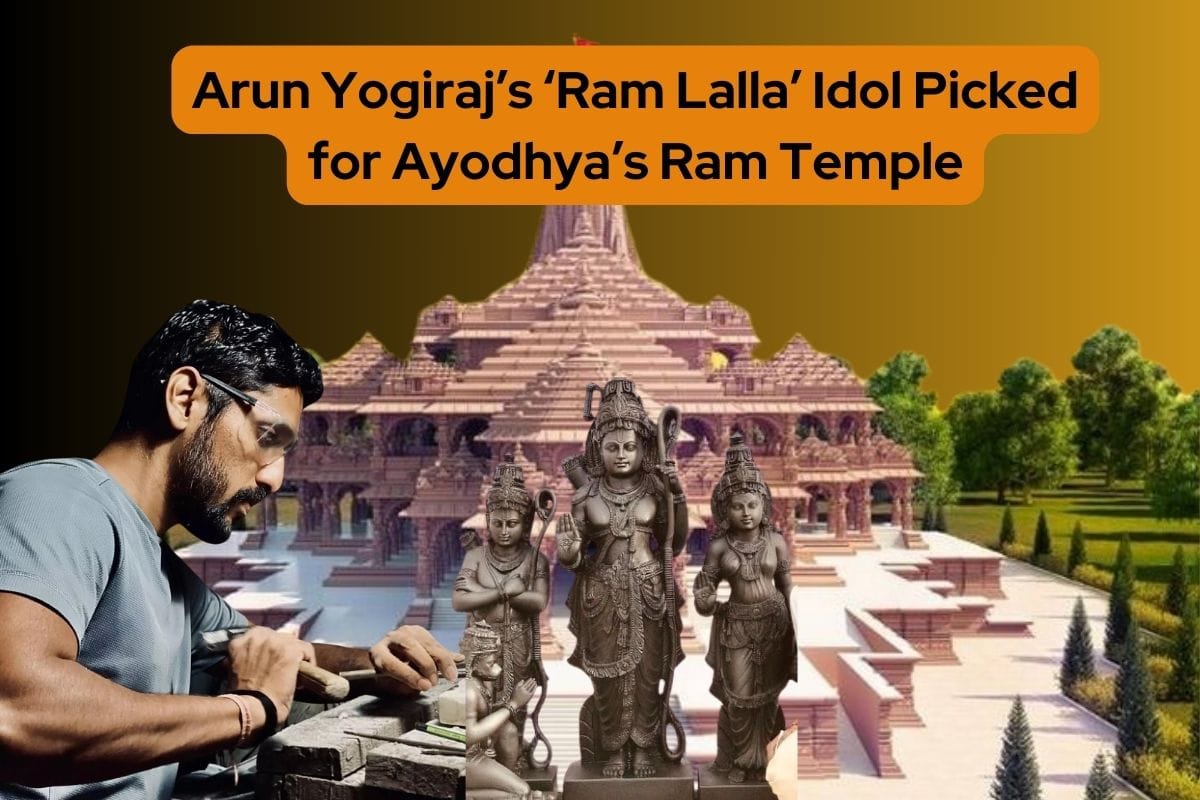
In a big moment, the pretty Ram temple in Ayodhya will have a lovely idol of ‘Ram Lalla,’ made with care by Arun Yogiraj, a famous artist from Karnataka. This topic can be important part of the latest current affairs.
Honoring Family Tradition: Arun Yogiraj and His Sculptor Family History
Arun Yogiraj, a skilled artist, comes from a family of sculptors in Mysore that spans five generations. His great talent and hard work have earned him the special chance to see his idol placed in Ayodhya’s Ram Temple.
Encouraging Messages Suggest Yogiraj’s Creation is Liked
Even though Arun Yogiraj hasn’t got official news about his idol being accepted, kind messages from senior BJP leaders make him think that his work is appreciated.
Arun Yogiraj’s Creative Vision for ‘Ram Lalla’
Arun Yogiraj said that he wanted it to feel special and full of godliness, like a child’s face. He started working on it about six to seven months ago, aiming to make something that feels very spiritual.
Arun Yogiraj’s Journey from Family Roots to National Fame
Arun Yogiraj has had an incredible art journey, influenced by his dad and granddad, who were famous sculptors in Mysore. Even though he tried working in an office for a bit, his love for making sculptures brought him back in 2008, making him known across the country.
Arun Yogiraj’s Big Contributions to Indian Art
Arun Yogiraj is known for his great artwork, like a big statue of Subhash Chandra Bose and a tall sculpture of Adi Shankaracharya. He’s really good at making sculptures and has added a lot to the world of art.
Historical Context Of Ayodhya Ram Mandir
Ayodhya, located in the northern state of Uttar Pradesh, holds immense significance in Hinduism as the birthplace of Lord Rama, one of the incarnations of the deity Vishnu.
The narrative surrounding Ayodhya gained prominence due to the Babri Masjid-Ram Janmabhoomi dispute. The Babri Masjid, built in the 16th century during the Mughal era, stood at the site believed by Hindus to be the birthplace of Lord Rama. The dispute between Hindu and Muslim communities over the ownership of the land led to tensions and legal battles spanning several decades.
The turning point came on December 6, 1992, when the Babri Masjid was demolished by a large crowd of Hindu activists. This event resulted in widespread communal tensions and led to a long legal battle to determine the rightful ownership of the site.
In 2019, the Supreme Court of India delivered a historic verdict, settling the Ayodhya dispute. The court ruled in favor of the construction of a Ram temple at the disputed site while also allocating an alternative piece of land to the Muslim community for the construction of a mosque.
The Ayodhya Ram Mandir serves as a testament to the enduring importance of religious symbols and narratives in shaping the cultural landscape of the country. It stands as a place of worship, pilgrimage, and historical significance, attracting devotees and visitors from across India and beyond.


